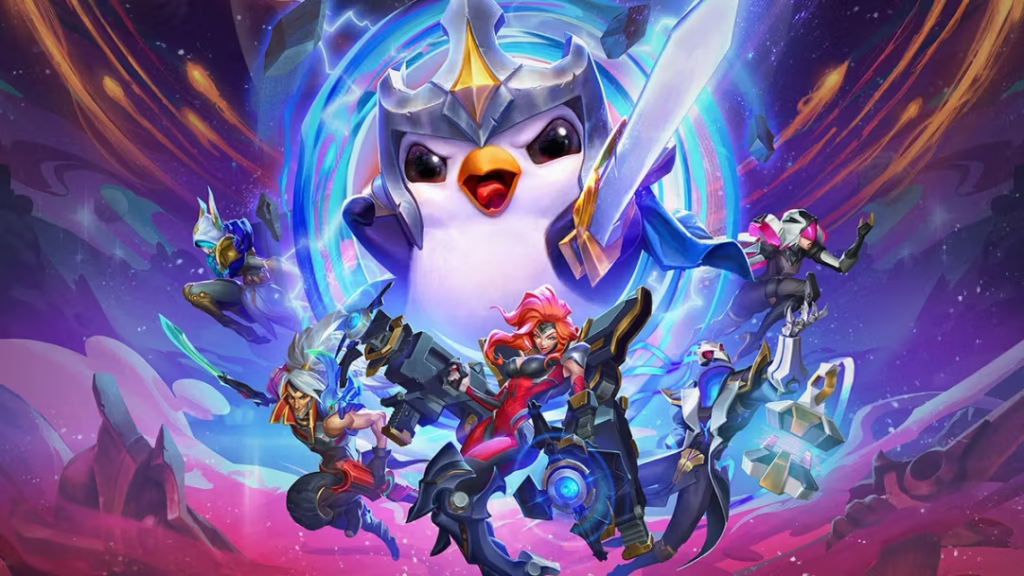Teamfight Tactics (TFT) is a game of strategy, adaptation, and sometimes, a bit of luck. Knowing which champions to prioritize at different stages of the game can be the deciding factor between climbing the TFT rankings or watching your Little Legend suffer a humiliating defeat. Whether you’re cruising through the early rounds or battling it out in the final moments, making smart champion choices is key to success.
This guide will walk you through the best champions to pick at every stage of the game—early, mid, and late—so you can dominate your lobbies and climb that ladder with confidence.
Why Understanding Champion Choices Matters
TFT isn’t just about buying shiny units and crossing your fingers. Every champion plays a critical role in your team’s success, whether they’re carrying your squad or enabling strong synergies. Knowing when to pivot, which champs to sell, and who your hard-hitters will be can completely change the tide of the match.
And hey, we’ve all been there—holding onto that 2-star Garen a bit too long, wondering why your team is getting stomped. Don’t worry, I’ve got you covered. Let’s break it down stage by stage so you know exactly who belongs on your board (and who belongs on someone else’s).
Early Game (Stages 1-2): Build a Strong Foundation
The early game is all about setting yourself up for success. You don’t need to laser-focus on an exact build here—flexibility is key. Instead, focus on strong, low-cost units that can keep you competitive while building your economy.
Champions to Prioritize:
- Poppy:
- One of the best 1-cost tanks in the game. Poppy is durable, and her Guardian or Yordle traits often provide useful early synergies.
- Perfect for frontline stability in the early rounds.
- Kassadin:
- Ah, the trusty mana battery stealer. Kassadin’s ability to reduce enemy mana is invaluable. Whether transitioning to tank builds later or prioritizing abilities, Kassadin is always worth considering.
- Ezreal:
- Great poke damage? Check. Easy synergies with traits like Innovator or Scrap? Double-check. Always a solid early choice to chip away at enemy teams.
Tips for the Early Game:
- Don’t tunnel vision on completing synergies too early. Winning streaks are great, but maintaining gold interest usually pays off more in the long run.
- Look out for 2-star units. Raw unit strength often trumps perfect synergy in these early rounds.
- Be flexible. Use what the shop gives you instead of forcing an exact comp too soon.
Mid Game (Stages 3-4): Establishing Your Core
By this stage, you’ve ideally hit level 6 or 7, and it’s time to solidify your build. This period is where TFT rankings start to separate the adaptable tacticians from the “I’m sticking to my plan no matter what” players. Focus on finding core units for your desired composition and managing your health pool.
Champions to Prioritize:
- Sejuani:
- A mid-game champion who thrives as a tank. Her AoE stun ability is a fantastic starting point for crowd control, making her invaluable for stalling enemies.
- Shen:
- Not only does Shen provide shields with his ability, but his flexible synergies often tie into multiple compositions. He remains one of the more consistent units overall.
- Ahri:
- Need consistent damage output? Ahri’s AoE can quickly turn the tide of battle, especially when paired with magic-damage synergies. She’s a great carry to transition into late game.
- Draven:
- If you’re leaning toward physical damage, Draven is often the go-to carry in this phase. With even minimal frontline, he’ll mow down opponents once positioned properly.
Tips for the Mid Game:
- Scout your opponents. What are they building? Are they hoarding a particular champion or synergy? Counterplay can help optimize your economy and unit purchases.
- Itemize your carries. By now, it’s crucial to have clear champions in mind for key items like Infinity Edge, Jeweled Gauntlet, or Morellonomicon.
- Keep upgrading. Don’t be afraid to transition your team if something stronger presents itself.
Late Game (Stages 5+): The Final Push
You’ve survived (hopefully), and now it’s all or nothing. This is where high-cost units, like Taveki, shine and completing synergies becomes critical to securing that coveted first-place finish. At this stage, positioning and counter-building are just as important as your unit choices.
Champions to Prioritize:
- Yasuo:
- Yasuo’s sweeping slashes and shield generation make him a terrifying carry in late-game scenarios. A top-tier choice if focusing on Challenger or Exile comps.
- Jinx:
- Often the centerpiece of Innovator or Scrap builds, Jinx is a late-game powerhouse whose AoE damage can obliterate clustered teams.
- Galio:
- The ultimate crowd-controller. Galio excels in multi-champion frontlines, buying your damage dealers precious time to work their magic.
- Kayle:
- While Kayle can be a bit of a risky investment, her late-game scaling can be unstoppable if you survive long enough to see her reach full potential.
Tips for the Late Game:
- Position carefully. Put carries like Jinx in corners for protection and tanks up front to absorb attacks.
- Spend wisely. Roll and level up judiciously—aim to hit that sweet balance between upgrading your units and maintaining team health.
- Always adapt. If someone has a strong backline Assassins comp, don’t cluster your carries!
Small Changes That Lead to Big TFT Rankings Gains
Mastering TFT is about doing the little things well. Understanding each stage of the game and how champions fit into those phases allows you to adapt rapidly to whatever RNG hands you. Being adaptable, knowing your win conditions, and making razor-sharp decisions are what separate the good players from the best.
Want to dominate those leaderboards? Start applying these tips, keep experimenting with comps, and just as importantly—have fun. At the end of the day, TFT is as much about strategy as it is about enjoying the chaos of battle.
Good luck climbing the TFT rankings—may your rerolls always hit that sweet 3-star champion!

Robert Griffith is a content and essay writer. He is collaborating with local magazines and newspapers. Robert is interested in topics such as marketing and history.





![‘Frankenstein’ Review – Guillermo del Toro’s Definitive Look At The Nature And Nurture Of Monstrosity [TIFF 2025] ‘Frankenstein’ Review – Guillermo del Toro’s Definitive Look At The Nature And Nurture Of Monstrosity [TIFF 2025]](https://cdn.geekvibesnation.com/wp-media-folder-geek-vibes-nation/wp-content/uploads/2025/10/Frankenstein-175_PF_20240430_20377_R-300x200.jpg)
![‘Wake Up Dead Man: A Knives Out Mystery’ Review – In Rian Johnson We Trust [LFF 2025] ‘Wake Up Dead Man: A Knives Out Mystery’ Review – In Rian Johnson We Trust [LFF 2025]](https://cdn.geekvibesnation.com/wp-media-folder-geek-vibes-nation/wp-content/uploads/2025/10/Wake-Up-Dead-Man-A-Knives-Out-Mystery-300x169.jpg)